Posts Tagged ‘movie reviews’
The Boiled Leather Audio Hour Episode 69! (nice)
December 19, 2017Sean. Stefan. Star Wars. ’Nuff said! Discover why Sean rates The Last Jedi as his least favorite Star Wars movie and learn what Stefan thinks it has in its favor as we go in-depth about Rian Johnson’s peculiarly divisive film in our longest episode ever!
Additional links:
Our Patreon page at patreon.com/boiledleatheraudiohour.
Our PayPal donation page (also accessible via boiledleather.com).
The 50 Greatest Star Wars Moments
December 18, 201730. Porgs! (Episode VIII: The Last Jedi)
What’s a four-letter word for “cute little calico penguin puffin pug owl cat hamster Ewok Mogwai Tribble Furby Pikachu hybrid thing”? Ask literally any child you know and you’ll get the answer. These preposterously adorable critters, designed by Jake Lunt Davies, are so insanely marketable and merchandisable that Disney may as well have fired them via drone strike under every Christmas tree in the country (for a fee, of course). Even so, it’s hard to begrudge these island dwellers, several of whom take up residence in the Millennium Falcon, since they really are as delightful as advertised. The scene where Chewie can’t bring himself to chow down on roast porg will do more for vegetarianism than a million naked PETA ads.
With Star Wars: The Last Jedi now in theaters, I revisited and revised my list of the greatest Star Wars moments for Vulture, incorporating the new movie and cutting it down to a nice round 50 entries.
Just for fun, here’s how the list breaks down, movie by movie:
20th Century Fox theme for Episodes I-VI 1
The Phantom Menace 3
Attack of the Clones 2
Revenge of the Sith 6
Rogue One 3
A New Hope 10
The Empire Strikes Back 9
Return of the Jedi 10
The Force Awakens 4
The Last Jedi 2
Does the number for The Last Jedi tell you anything about how I felt about the movie? Hmmmmmmm.
The Boiled Leather Audio Moment #12!
November 13, 201730 Movies to Watch If You Like ‘Stranger Things’ [or Don’t!]
October 25, 2017The Last Unicorn (1982)
One of the most beautiful, melancholy, magical, and genuinely adult animated features in American film history. This adaptation of fantasist Peter S. Beagle’s novel comes to us courtesy of Rankin/Bass Productions and Japanese animation studio Topcraft — the former responsible for the stop-motion Christmas classics Rudolph the Red-Nosed Reindeer and Santa Claus Is Comin’ to Town, the latter eventually evolving into Hayao Miyazaki’s Studio Ghibli. Together, they produced the J.R.R. Tolkien cartoons The Hobbit and The Return of the King, plus this gut-punch of a film, about a unicorn who becomes trapped in the body of a young human woman. With a body-horror subtext worthy of Cronenberg and a ridiculously impressive voice cast (Mia Farrow, Jeff Bridges, Christopher Lee, Angela Lansbury, and Alan Arkin), it’s like a cross between Stranger Things and a story from the Dungeons & Dragons game its characters play.
Paperhouse (1988)
Directed by Bernard Rose — who would later adapt Hellraiser writer-director Clive Barker’s short story “The Forbidden” into the acclaimed urban-horror film Candyman — this harrowing supernatural/surrealist film centers on an 11-year-old girl who discovers her dreams and drawings are coming to life and consuming her reality. She’s got to figure out how to take charge and reassert control. Paperhouse is what I think of when Stranger Things is at its best.
Recast the relationship between Eleven and Mike Wheeler as a tragedy instead of a heroic fantasy, and you might wind up with this morbid proto-romance between a bullied kid and the young vampire who simultaneously befriends, protects, and uses him. There’s stuff going on here about abuse and loneliness, for characters of all ages, that digs way deeper than anything Stranger Things has done; if Netflix’s series is a 101 entry-level course, this is graduate work.
Harry Dean Stanton: 10 Essential Movies
September 18, 2017Twin Peaks: Fire Walk With Me (1992)
“I’ve already gone places. I just wanna stay where I am.” Stanton’s role as tired-looking trailer-park owner Carl Rodd in David Lynch’s Twin Peaks prequel was as cryptic as everything else in the film, lasting just a few short minutes and some spare lines of dialogue. But he packs decades of world-weariness into his brief screen time; nobody could turn “It’s just more shit I gotta do now” into a punchline that doubled as a declaration of existential despair. Stanton reprised and expanded the role in Peaks’ astonishing third season this year, cracking jokes about defying death one minute, bearing witness to unspeakable tragedy like an earthbound angel the next – a moving, bonus grace note in a long, legendary career. STC
The Top 30 Stephen King Movies, Ranked
August 3, 20173. The Dead Zone (1983)
David Cronenberg is the man who made “body horror” a thing; Stephen King’s tales of terror derive much of their power from down-to-earth Americana. An odd couple, to be sure. But the Canadian auteur brings out the best in the story of a New England schoolteacher (professional weirdo Christopher Walken, pitch-perfect) who awakens from a five-year coma with the ability to see the future of anyone he touches. Co-starring Martin Sheen as a blustery, right-wing politician rising to power via blue-collar populism and ready to trigger World War III – imagine that! It’s cerebral but not chilly, complex but compelling – and as eerily prescient as its psychic protagonist. STC
I wrote about The Dead Zone for Rolling Stone’s very gutsy ranking of Stephen King movie adaptations. The Top 10 is going to throw you for a loop.
The 100 Greatest Movies of the Nineties
July 13, 201749. Heavenly Creatures (1994)
Before Peter Jackson took us all to Middle-earth, he brought moviegoers to the mad world of two troubled teenagers – a fictional universe every bit as engrossing as J.R.R. Tolkien’s, but far more romantic and lethal. Based on a true-crime story, the film depicts pre-stardom Kate Winslet and Melanie Lynskey as Pauline Parker and Juliet Hume, two New Zealand teenagers whose BFF-ship blossoms first into love, then madness and ultimately murder. Jackson’s kinetic camera captures the rapturous swirl of teenage dreams before plunging us into its brutal, bloody endpoint. It’s a beautiful dark twisted fantasy. STC
I wrote about Natural Born Killers, Heavenly Creatures, and The Blair Witch Project for Rolling Stone’s list of The 100 Greatest Movies of the ’90s. My editor David Fear assembled an absolute murderers’ row of writers for this thing — it’s a real treat.
The Boiled Leather Audio Hour Episode 64!
June 30, 2017Children of Men (A Patreon Production)
The Boiled Leather Audio Hour goes dystopian this month! By the special request of our Patreon supporter Jason, who earned the right to choose a topic for the podcast by subscribing at the $50 level, Sean & Stefan are taking a deep dive into the world of Children of Men, director Alfonso Cuarón’s gripping 2006 political science-fiction film. Starring Clive Owen and Julianne Moore and set in a near future where the world has been rocked by an infertility epidemic that has completely ended all childbirths for 18 years and counting, the movie is striking both for its technical virtuosity, particularly during its white-knuckle action sequences, and its emphasis on very human cruelty and empathy. How does its technical prowess affect its message? Where does the storytelling and imagery succeed, and where does it falter? What does its bleak yet ultimately optimistic vision of the future portend for our own grim present? We’ll do our best to answer those questions. Needless to say, spoilers abound!
Additional links:
Abraham Riesman’s article on the making of the film for Vulture.
Our Patreon page at patreon.com/boiledleatheraudiohour.
Our PayPal donation page (also accessible via boiledleather.com).
The 20 Most Essential Jonathan Demme Movies
May 17, 2017The Silence of the Lambs (1991)
Demme’s ticket to horror-movie immortality, and a well-deserved one at that. This iconic thriller about an FBI agent (Jodie Foster, never better) using a serial killer to catch a serial killer made a superstar out of Anthony Hopkins; compare the actor’s work here to his subsequent turns as the charismatic, cannibalistic Dr. Hannibal Lecter and you can see the director’s sense of less-is-more restraint paying dividends. The film also broke a bloody glass ceiling at the Oscars, too, becoming the only horror movie to date to win Best Picture. But it’s the thoughtful way in which Demme shot the world that our heroine Clarice Starling has to navigate – so many male faces, looming huge in the frame and staring right into her (and our) eyes – that remains Silence’s most pointed commentary on predators and patriarchy. STC
I forgot to link to this when it went up, but Rolling Stone put together a lovely tribute to the work of the late director Jonathan Demme, and I was honored to contribute a few words on The Silence of the Lambs, a great film.
The 50 Best ‘Star Wars’ Characters of All Time
May 4, 20177. Rey
Complaints that The Force Awakens‘ desert-dwelling heroine is just too good at everything she does – pilot, mechanic, Force-wielder, lightsaber duelist, escape artist – ignore two important factors. First, her flashbacks indicate that there’s much more to her mysterious past than meets the eye, and we wouldn’t be surprised if long-buried memories of Jedi training were a part of it. Second, breakout star Daisy Ridley is an absolute joy to watch in the role, a magnetic screen presence who nails moments of mirth and melodrama alike. (The same could be said for her franchise warrior-sister Jyn Erso, who feels as if she’s been cut from the same cloth as Rey.) If she’s the Star Wars Universe’s new chosen one, the good folks at Lucasfilm have chosen wisely. STC
I added a few new entries to Rolling Stone’s list of the best Star Wars characters of all time.
‘The Godfather’ Was Really the First Great Prestige TV Show
April 24, 2017Not to get all Beavis and Butt-head about it, but bad shows suck because, well, they suck, not because they are insufficiently episodic in structure. This is why calls from the critical community, leading many of the fan conversations on these shows, to eschew unified, serialized storytelling in favor of tight arcs and standalone episodes feel like a misdiagnosis. For one thing, they fail to consider that noticeably self-contained installments of series like Game of Thrones and Girls are as memorable as they are precisely because those shows don’t usually work that way.
These claims fall into the same trap of cinematically minded showrunners who insist that “it’s not TV” by agreeing with them, setting up a false dichotomy between what constitutes the proper use of the medium and what doesn’t. In its maturity, television has proven capable of countless things: TV dramas alone can be as densely serialized as The Wire Season 4, as memorably episodic as Mad Men Season 5, as sweeping as Fargo Season 2, and as sensation-driven as Empire Season 1. Sometimes they can be several things at once; Black Mirror, like its groundbreaking antecedent The Twilight Zone, tells a different story with a different set of characters every single episode, making it simultaneously one of the most movie-like and most episodic shows on television. Saying any of these series is closer or farther away from The One True Way to Make TV obscures the fact that there’s no such thing.
In fact, this array of options, this wide-open landscape of different structures and tones and techniques, is the truest indicator that “prestige TV” is not a contradiction in terms. Problems with the execution aside — and problems with the execution is all they really are — television can do whatever you want it to do at this point, and declaring one approach or the other superior is a procrustean blunder — like arguing The Godfather is less great a film because you can break it down like a television series, if you’re feeling particularly perverse (ahem). If that means some showrunners get to declare their series a double-digit-hour movie, so be it. The proof will be in the pudding, or the cannoli. You can have it both ways. Why wouldn’t you want to try?
What was your favorite episode of The Godfather? “Khartoum”? “The Thunderbolt”? The pilot, “I Believe in America”? I presented a modest proposal about a cinematic classic in order to talk about where all the “no, your TV show isn’t a 73-hour movie” structuralist reprimanding gets us for Thrillist.
They Are ‘Legion’: Tracking the Superhero Show’s Key Horror References
March 30, 2017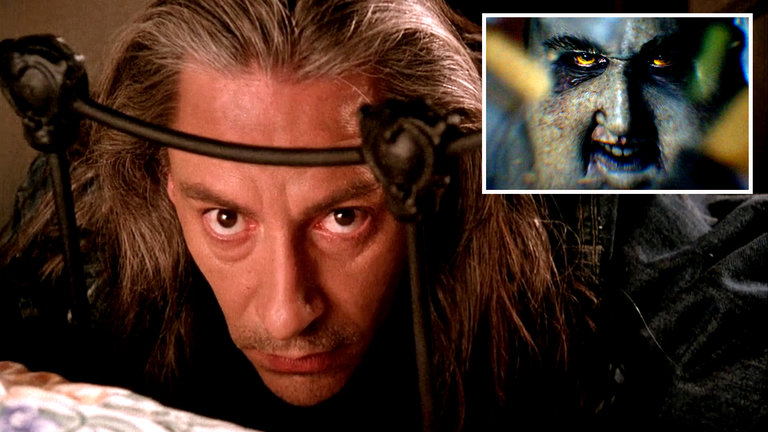
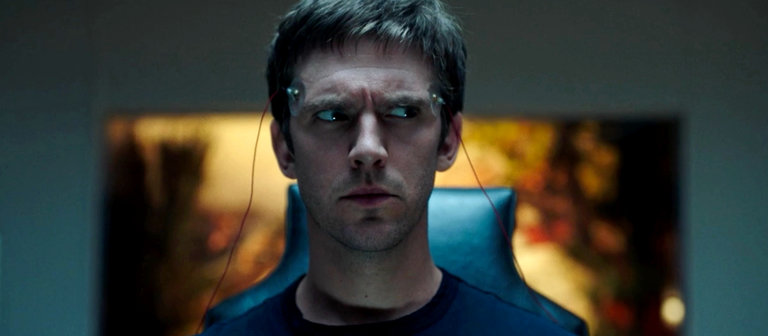
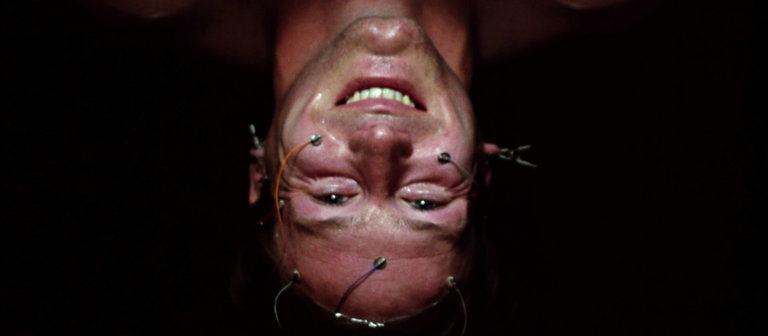
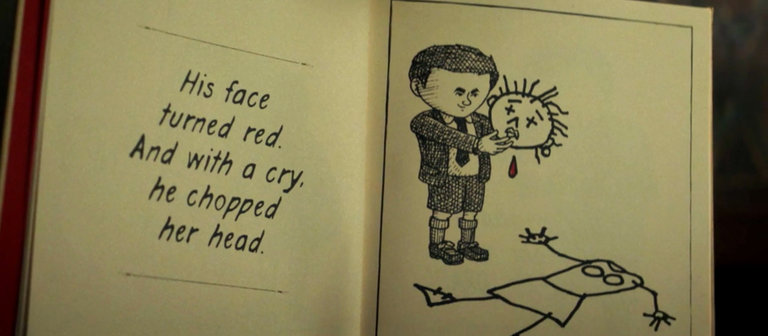
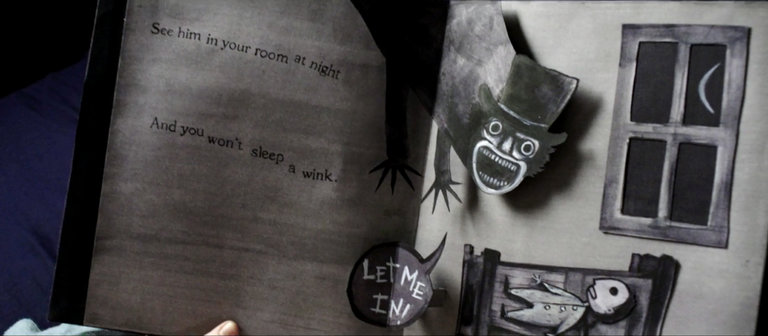
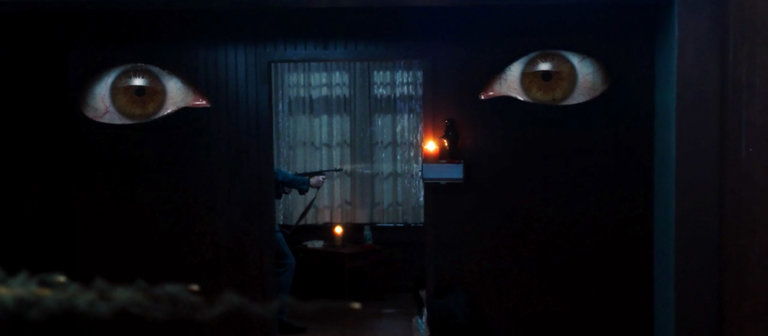
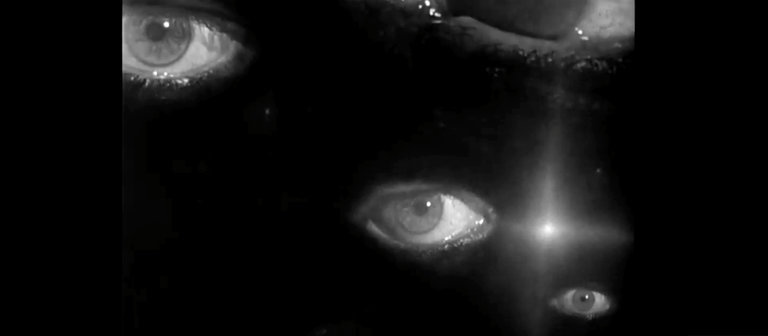
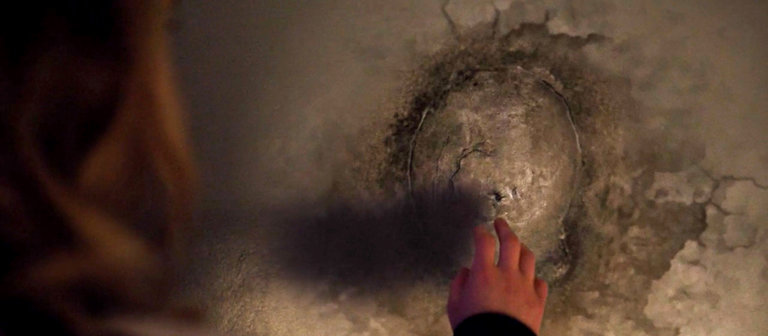
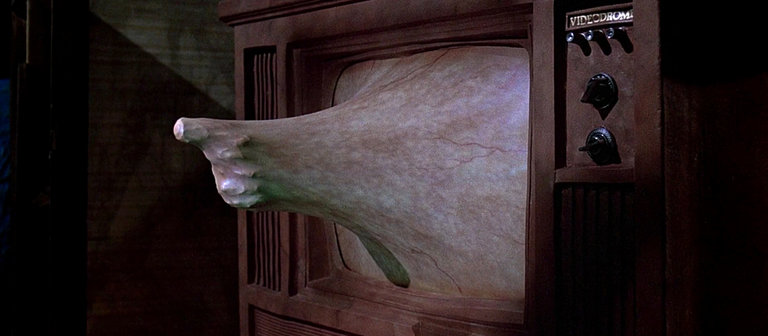
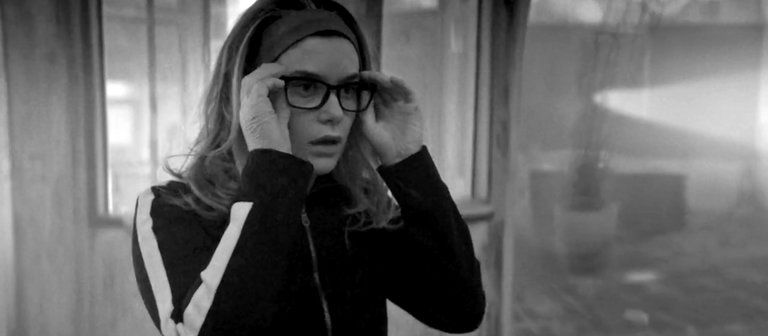
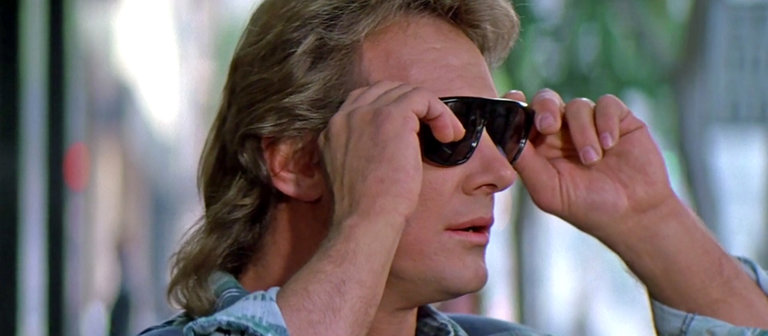
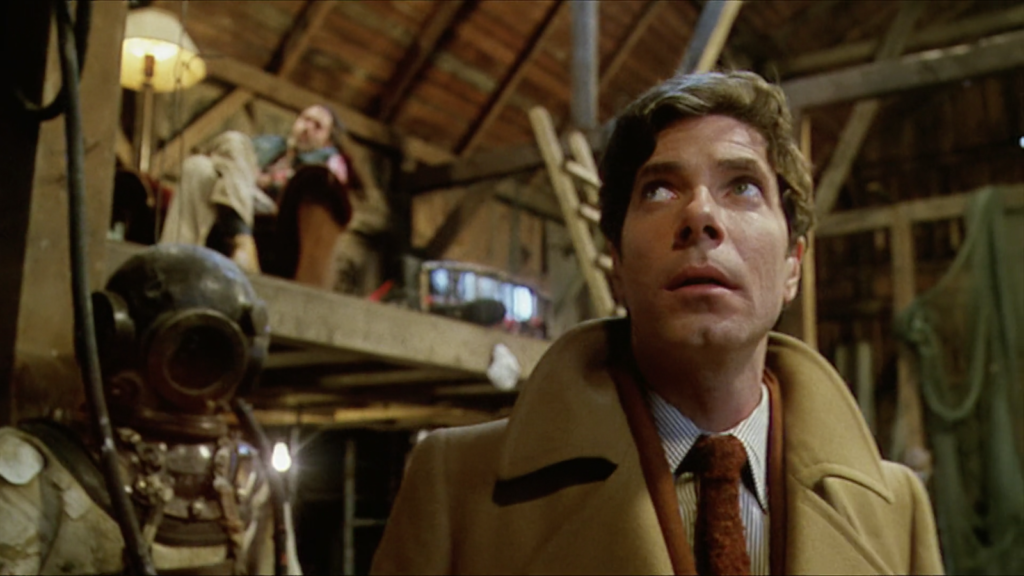
While Lynch gets the “Legion”-related headlines, another director named David seems to have left an even deeper mark. That would be David Cronenberg, who made a name for himself with a series of body-horror films that depicted the disturbing interplay between mind and matter, often with a conspiratorial backdrop of sinister secret agencies or killer corporations out to harness psychic power for their own ends.
“Legion” paints in shades of Cronenberg’s “Videodrome,” with its pulsating inanimate objects; “Shivers,” with its parasite imagery; “The Brood,” with its story of a powerful telepath under the care of a manipulative therapist (played by Oliver Reed, who may have lent both his name and his machismo to the guru figure Oliver Bird); and most especially “Scanners,” with its all-out war between rival psychic factions and a protagonist who’s telepathically tormented by the voices in his head. (“Scanners” also features a blink-and-you’ll-miss-it appearance from a very familiar-looking deep sea diver suit).
I wrote about David Cronenberg, David Lynch, and Legion’s other major horror influences for the New York Times. I have my beefs with Legion, but it’s porting its horror references into a whole different genre, as opposed to Stranger Things, which is just reheating them in the microwave and trying to pass of leftovers as a fresh-cooked dish.
This Valentine’s Day, Watch ‘The Love Witch’
February 14, 2017But the most romantic thing about The Love Witch is the existence of the film itself. To call a work of art “a labor of love” is to imply a sort of jejune passion, an amateur’s enthusiasm, but nothing could be further from the case here. Taking the concept of the auteur to a whole new level, Anna Biller not only wrote, edited, scored, produced, and directed this movie — she also served as the production designer, the set decorator, the art director, and the costume designer. She personally built, knit, sewed, collected, or otherwise provided many of the film’s key props, from the witches’ altar to the characters’ jewelry to a rug that took her months to make. If the lengthy and thoughtful essays and interviews on her blog are any indication, she also served as the movie’s on-set philosopher. Short of starring in the movie herself, there’s no way The Love Witch could be more Anna Biller’s vision.
The result is unmistakably familiar. To watch The Love Witch is to enter the headspace and heartspace of another human being as surely as falling in love.
This becomes crystal clear barely five minutes into the film. After an opening driving sequence that’s a loving homage to similar scenes in Hitchock’s Psycho and The Birds, we enter the Billerverse in earnest — a world where every detail is deliberate and delightful. Tucking her cherry-red cigarette case into her cherry-red purse, Elaine emerges from her cherry-red car in her cherry-red dress, then takes her cherry-red suitcase out of the cherry-red trunk to enter an apartment full of occult artwork so colorful it’d make a Crayola 64-pack blush. Next, we’re off to a sumptuously appointed tea room in which every one of the all-female clientele is clad in cotton-candy pink; the matching floral-patterned tea set, hand selected by Biller herself, looks like something made of marzipan in the sugar-spun home of a fairy-tale cannibal witch.
By the time I hit this point in the movie, I was laughing out loud in sheer joyful admiration. Whether working in true independent form like Biller or blessed with the carte blanche freedom afforded to established and acclaimed names like Scorsese, Anderson, Tarantino, or Coen, few filmmakers have anything close to this level of confidence in their own taste and vision. Pulling this off for a single scene would be reason to celebrate. Constructing an entire film from a single intelligent, idiosyncratic worldview is close to a miracle. And from its first scene to its last, from the font choice in its opening titles to the music over the closing credits, that kind of miracle is exactly what The Love Witch delivers. Watch it with some witch you love.
The Boiled Leather Audio Hour Episode 58!
January 27, 2017Rogue One: A Star Wars Podcast
Rebellions are built on hope, and this episode of the Boiled Leather Audio Hour is built on Rogue One: A Star Wars Story! Stefan and Sean continue their exploration of that galaxy far, far away with a look at Gareth Edwards’s stand-alone contribution to the Star Wars cinematic universe. How does it stack up against The Force Awakens? What’s the impact of its countless cameos and Easter eggs on the one hand and its unprecedented-for-the-franchise story structure on the other? How do we feel about Edwards’s handling of action, character, setting, performance, and the all important “toyetic” factor? Hit play and find out!
And remember, if you like what you hear, subscribe to our Patreon to hear more of it via our subscriber-exclusive Boiled Leather Audio Moment mini-podcast!
Our BLAH episode on the prequel trilogy.
Our BLAH episode on The Force Awakens.
Sean’s article comparing Rogue One to TFA for Rolling Stone.
Sean’s list of the 57 Greatest Star Wars moments for Vulture.
Our Patreon page at patreon.com/boiledleatheraudiohour.
Our PayPal donation page (also accessible via boiledleather.com).
Artcrime: What “Beware the Slenderman” Says About Blaming Artists for Violence
January 25, 2017There is no artist behind Slender Man, not in the panoptic, memetic form in which Morgan and Anissa encountered him. Slender Man’s “author” is the internet and the army of artists and writers and filmmakers and game designers who inhabit it. Only the accident of history, in which the original posts can be tracked down, enables us to put names to the faceless being at all. A few decades ago Slender Man would just be Bloody Mary or the killer with a hook for a hand who disrupts teenagers necking in their cars. A few centuries ago and he’d be the vampire a town feared enough to dig up graves and behead the corpses inside, or the witch who lures wayward children to their doom. With no artist in play, it becomes clear how fallacious it is to pin the blame on artists for the actions of disturbed individuals who consumed their art at all.
This is not to say art never affects society or inspires terrible things. When Jared Kushner crows about targeting ads for his odious father-in-law Donald Trump’s presidential campaign to viewers of The Walking Dead because of their concerns about immigration, he’s recognizing the fascist ideology that underlies both the show and the current administration. But art with an ideological vector connects the reader or viewer to a cohesive worldview, which, right or wrong, helps explain society and prescribe remedies for its ills. Action and reaction are to be expected.
That’s different from a movie about a pair of abused kids who become mass murderers and media superstars, or music by a glam-influenced Satanist, or creepy internet posts about a demon with no face. These merely provide monsters who embody fears and desires, not a political program. Those monsters will always exist in one form or another, and disturbed kids like Morgan and Anissa will always find them and use them as the mold into which they pour their crumbling sanity or mounting bloodlust. In blaming the art or the artist, we commit the exact same error, looking for a boogeyman to help us explain the inexplicable. We’re finding our own Slender Man to serve.
The Boiled Leather Audio Hour Episode 57!
December 31, 2016A Long Time Ago: The Star Wars Prequel Trilogy
This New Year’s Eve, ring in the coming year the old-fashioned way: Listen to Sean and Stefan talk about George Lucas’s Star Wars prequel trilogy for 80 minutes! For the final BLAH of 2016, we’re tackling one of our most frequently requested topics and going long on Episodes I, II, and III of the blockbuster franchise: 1999’s The Phantom Menace, 2002’s Attack of the Clones, and 2005’s Revenge of the Sith. An all but universally accepted punching bag for much of the decade since it brought the curtain down on the early adventures of Obi-Wan Kenobi, Anakin Skywalker et al, the prequel trilogy has seen something of a change of critical fortune at since dawn of the Disney era and its crowd-pleasing kick-off The Force Awakens. With another prequel, Rogue One, now in theaters (though Stefan hasn’t seen it, so shhhhh no spoilers), we thought it would be the perfect time to discuss Lucas’s uneven but ambitious auteurist prequel saga in depth, movie by movie. Are they the Fall of the Republic–level disasters they’re made out to be, or do they have an artistic Force worth reckoning with? Listen in and find out!
PLUS! With this episode of BLAH, our 14th this year, we’re pleased to announce the start of a new series of subscriber-only mini-episodes beginning this January! For the low low price of a monthly $1 contribution to the Boiled Leather Audio Hour Patreon, you’ll receive exclusive monthly podcasts focused squarely on A Song of Ice and Fire (with a bit of Game of Thrones mixed in, we suspect, but mostly the books) and derived from listener questions. It’s our way of saying thank you to those of you who’ve subscribed this year and thus made recording these so much easier for us—and, we hope, a tempting offer for those of you who haven’t yet taken the plunge. Visit our Patreon page, pitch in, and get in on the ground floor! And now back to your regularly scheduled BLAH. Happy Holidays!
Additional links:
Jesse Hassenger’s essay on the prequels for the AV Club.
Roderick Heath’s essay on the prequels for Ferdy on Films.
Sean’s list of the 57 Greatest Star Wars Moments for Vulture (warning: Rogue One spoilers).
Our BLAH episode on The Force Awakens.
Our Patreon page at patreon.com/boiledleatheraudiohour.
Our PayPal donation page (also accessible via boiledleather.com).
Carrie Fisher’s 10 Greatest ‘Star Wars’ Moments
December 27, 2016“This is our most desperate hour.” If you have to sum up the mood of the moment, look no further than the words of Princess Leia herself. In her most famous performance – one in which she’d anchor the first three films in the blockbuster Star Wars series, than reprise to rapturous acclaim decades later in The Force Awakens – Carrie Fisher embodied hope in the face of seemingly insurmountable odds. Whether she was playing it cool in one of Leia’s more regal moments, slinging insults and shooting stormtroopers as a Rebel leader or chronicling her real-life battles with addiction and mental illness in her fearlessly funny writing, Fisher was one of film’s great heroines, on screen and off. The 10 moments below are our tribute to the great woman’s greatest creation. We loved her; she knew.
On Christmas, before I found out about George Michael’s death and before Carrie Fisher died, I was already telling my cousins about the week a few years ago when The Sopranos’ James Gandolfini, muckraking young journalist Michael Hastings, and Fantagraphics co-founder Kim Thompson all died; 2016, I said, was that week stretched out over a year. And it wasn’t even done with us yet.
Why ‘Rogue One’ Is a Better ‘Star Wars’ Movie Than ‘The Force Awakens’
December 20, 2016Think back to Force‘s major settings and story beats. The three planets on which the bulk of the action take place – Jakku, Takodana and Starkiller Base – evoke the desert, forest, and arctic landscapes of the original trilogy’s Tattooine, Endor and Hoth, respectively. The story centers on a young adult stranded in a sandy world, awakening to their Force-dictated potential in the face of opposition from a black-masked wielder of the Dark Side, with Rey and Kylo Ren taking the place of Luke Skywalker and Darth Vader. Tentacled menaces threaten our heroes, with Han Solo’s captured Rathtars standing in for A New Hope‘s dianoga and Return of the Jedi‘s Sarlacc. Dangerous dogfights and narrow escapes dominate the action sequences, as they did in The Empire Strikes Back and A New Hope. Good guys attempt to blow up a superweapon by finding its secret weakness, a plot point so familiar that Solo himself cracks a joke about it. The hugely entertaining performances of relative newcomers Daisy Ridley and John Boyega, best-of-their-generation contenders Oscar Isaac and Adam Driver, and even lions-in-winter Harrison Ford and Carrie Fisher may disguise it, but in artistic terms, this is a very conservative film.
By contrast, Rogue One looks like an alien life form. No snow. No forest. Some sand, but mostly as the surroundings for Jedha, as teeming a city as the series has shown us since the prequels’ skyscraping metropolis of Coruscant. No edge-of-your-seat dogfights and “yahoo!” escape sequences – the only thing these characters escape is death, and then only briefly. There’s a tentacled monster, but it’s used as a method of “enhanced interrogation” rather than presented as an apex predator. The goal of the final fleet-on-fleet battle isn’t to destroy a superweapon, but simply to run interference so the method to destroy said superweapon can be smuggled out of storage and preserved until the time comes. Most importantly, none of the major new characters – whether they are one with the Force or in the service of its Dark Side – are men and women of destiny … because none of them, literally none of them, survive the end of the film. As far as survival and celebration are concerned, this thing makes Empire look like Jedi. It’s doing something no other Star Wars film has ever done: depicting the life and death of everyone who sacrificed so the Skywalkers, their friends and their foes could decide the fate of the galaxy.
Rogue One crammed in so much Star Wars fanservice—how did it still feel fresher than The Force Awakens? I tried to answer this question for Rolling Stone. I note in the piece that this is not to argue Rogue One is necessarily a successful film, just that it’s its own film in a way The Force Awakens isn’t.
The *57* Greatest Star Wars Moments, Ranked
December 20, 201657. Dude, where’s my theme music? (Rogue One: A Star Wars Story)
A long time ago, in a galaxy far, far away … nothing! Just a wide-vista shot of an unknown planet’s rim, a slightly off-brand variant of the first few notes of John Williams’s classic score by Lost composer Michael Giacchino, the words “ROGUE ONE,” and that’s it. Disney honchos had already indicated that director Gareth Edwards’s stand-alone “Star Wars Story” would jettison the traditional opening sequence as a way to set it apart from films set within the main saga’s trilogy framework, but hearing about it and witnessing it firsthand are two different things. After a lifetime of watching Star Wars movies, what didn’t happen in Rogue One’s opening seconds was nearly as striking as anything that did happen afteward.
I gave my list of the Greatest Star Wars Moments for Vulture a post–Rogue One update. Check it out!
The 50 Greatest Star Wars Moments, Ranked
December 16, 20164. The Yub-Nub Song (Episode VI: Return of the Jedi)
Accept no substitutions: The original Ewok song of celebration that ends the first trilogy is the only Ewok song that matters. For reasons beyond comprehension, George Lucas and John Williams replaced this charming, percussive, gibberish-based hoedown with corny pan-flute New Age–isms when Lucas re-released the trilogy decades later. But no viewing of Jedi in my house was complete without dancing around the living room to those gleeful “yub-nubs,” the xylophone made of captured Imperial helmets, and that final choral sweep into the closing theme. For me, this was Star Wars.
With Rogue One hitting theaters, I ranked the 50 greatest moments in first seven Star Wars films for Vulture. I had a lot of fun, boy oh boy.
